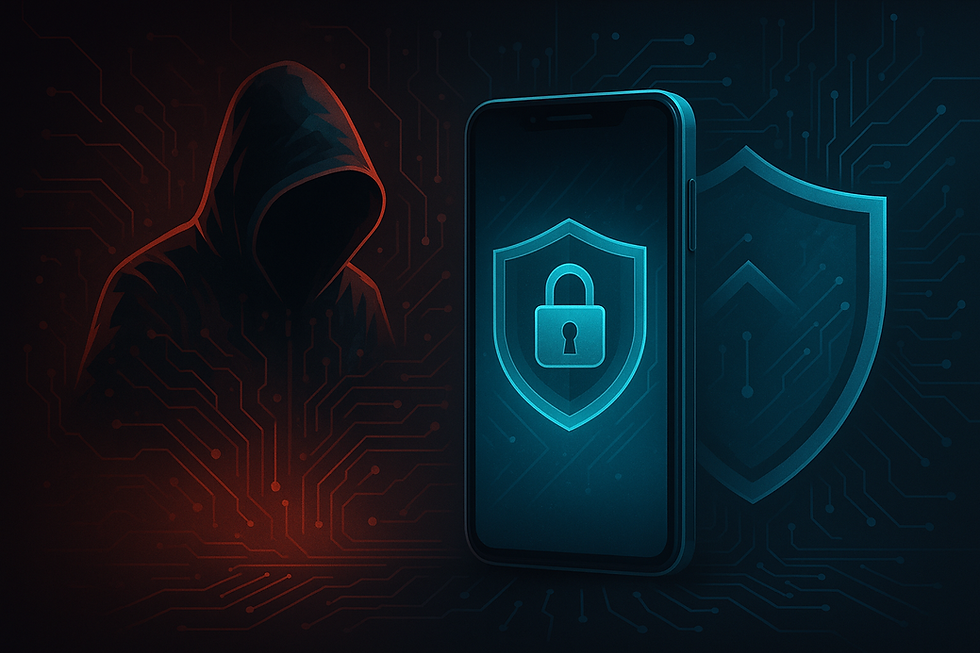How Your Location Is Tracked Daily
- SECURECRYPT

- Feb 4, 2022
- 3 min read
Updated: Nov 16

Every minute of every day, dozens of companies—largely unregulated and unscrutinized—log the movements of millions of people with mobile phones, storing the information in vast data files.
Recently, a file obtained by journalists revealed more than 50 billion location pings from over 12 million Americans, tracking their movements through major cities like Washington, New York, San Francisco, and Los Angeles. This data, spanning several months in 2016 and 2017, was alarmingly detailed, showing the precise location of individual smartphones.
The sources of this data — who wished to remain anonymous — were deeply concerned about potential abuses and wanted to inform the public and lawmakers.
After thorough analysis, it became evident that the dataset included people from all walks of life, from those in trailer parks in Alabama to residents of luxury high-rises in Manhattan.
The implications were startling, with the ability to trace individuals visiting high-profile locations like the Playboy Mansion or the estates of celebrities such as Johnny Depp, Tiger Woods, and Arnold Schwarzenegger.
If you are a C-level executive or public figure, your privacy is of utmost importance. SECURECRYPT provides unparalleled privacy that your regular cellular provider cannot match.
With our network-level protections, your movements cannot be tracked, and all your metadata is encrypted at all times. SECURECRYPT blocks any external location queries made by global telecom providers, making cellular network tracking impossible. Free apps cannot offer this level of defence.
SECURECRYPT Features: Comprehensive Security and Privacy
SECURECRYPT combines application, hardware, and network protections to ensure complete privacy. Our encrypted communication features include end-to-end encrypted chat, calls, group chats, file transfer, and an encrypted vault.
Additional security measures provide robust protection against interception and tracking.
Encrypted Communication: Fully end-to-end encrypted chat, calls, group chats, file transfers, and a secure vault.
PGP Encrypted Email: Secure external communications with PGP encryption.
Phone Cloak: Disguise your secure apps behind a regular phone dialer.
Private Closed Network: Isolated communication environment for exclusive privacy.
Layered Reverse Proxy Network: A layered reverse proxy network ensures SECURECRYPT traffic never touches the internet directly, routing every connection through multiple controlled relay points that conceal server origins, break traceability, and shield the core infrastructure from any form of targeting or fingerprinting.
Systems IP Masking: Dynamic IP address changes for complete anonymity.
SOS Distress Notification: Immediate alerts to contacts in case of a wipe.
Self-Destructing Messages: Automatic message deletion after a set period.
Duress Password and Panic Wipe: Instant data wipe in high-pressure situations.
Stealth Mode and Chat Masking: Conceal the app and replace sensitive chats with random ones.
Secure Voice Changer: Anonymize your voice messages in real-time.
Device Lock on Shaking: Quick app lock with a simple shake.
Vault Passcode: Additional security for encrypted vault access.
Remote Wipe and USB Developer Mode Proofing: Ensure complete data eradication and prevent unauthorized access.
Unparalleled Location Privacy
With SECURECRYPT, your location data is protected like never before. Our Secure Global SIMs prevent location tracking at the cellular network level, blocking any location queries made by telecom providers. This protection is crucial in everyday life, as well as in the context of sensitive situations highlighted in this article.
Whether you are a government employee, contractor, activist, journalist, or anyone in a sensitive industry, SECURECRYPT ensures that your communications are secure and your location remains private.
Protecting Your Communications and Data
The implications of unchecked location tracking are profound. Location data can reveal intimate details of your life, from your daily routines to your personal relationships. It can expose sensitive visits to places like methadone clinics, psychiatric offices, or secure facilities. Such surveillance can be weaponized by authoritarian regimes or misused by private entities for malicious purposes.
SECURECRYPT ensures that your life is not an open book. By using our secure devices and SIM cards, you can protect your privacy and prevent unauthorized tracking. Our infrastructure is built around a Zero-Trust architecture, and all metadata is encrypted, ensuring that your data remains secure.
In a world where location tracking and data privacy are growing concerns, SECURECRYPT offers a comprehensive solution to keep your communications safe and your location private. For more information, visit our website at https://securecrypt.ca and learn how SECURECRYPT can protect you from the hidden dangers of location tracking.


